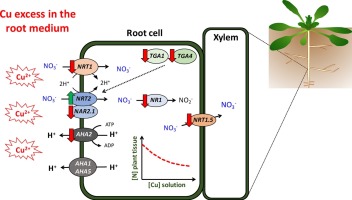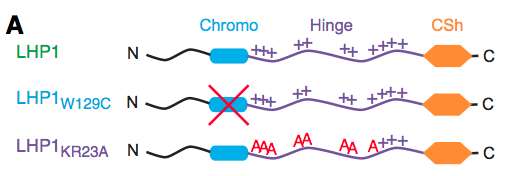The first four papers in this GARNet Research Roundup includes research from Norwich Research Park. Firstly members of Jonathan Jones’ lab have identified a new Avr gene from Hyaloperonospora arabidopsidis. Secondly Anne Osbourn’s lab characterises two novel arabinosyltransferases that are involved in the plant defence response. Thirdly Cathie Martin’s group is involved in a study that investigates the biosynthesis of the metabolite ubiquinone. Finally in research from NRP is from Silke Robatzek’s lab, where they use a novel quantitative imaging system to characterise stomatal mutants.
The next two papers arise from work at SLCU, firstly looking at the possible role of a novel transposon family during gene-shuffling and secondly a paper that investigates the structure of an important component of the strigolactone signaling pathway.
The seventh paper from Peter Eastmond’s lab at Rothamsted Research identifies a novel gene involved in seed oil composition. The penultimate paper is from Peter Unwin at the University of Leeds and assesses the cell wall composition of ‘giant’ root cells induced by nematode Meloidogyne spp. Finally is a methods paper that describes how microCT imaging can be used to measure different leaf parameters.
Asai S, Furzer O, Cavik V, Kim DS, Ishaque N, Goritschnig S, Staskawicz B, Shirasu K, Jones JDG (2018) A downy mildew effector evades recognition by polymorphism of expression and subcellular localization. Nature Communications doi: 10.1038/s41467-018-07469-3
Open Access
Shuta Asai from Jonathan Jones’ lab at The Sainsbury Lab, Norwich is the lead-author on this study that looks at co-evolution of host and pathogen resistance genes. The relationship between Hyaloperonospora arabidopsidis (Hpa) and Arabidopsis is defined by the gene-for-gene model of host Resistance (R) genes and pathogen Avirulence (AVR) genes. In this study the authors identify the HaRxL103Emoy2 AVR gene that is recognised by the R gene RPP4 and how this resistance is broken by altered expression or cellular localization.
Louveau T, Orme A, Pfalzgraf H, Stephenson M, Melton RE, Saalbach G, Hemmings AM, Leveau A, Rejzek M, Vickerstaff RJ, Langdon T, Field R, Osbourn AE (2018) Analysis of two new arabinosyltransferases belonging to the carbohydrate-active enzyme (CAZY) glycosyl transferase family 1 provides insights into disease resistance and sugar donor specificity. Plant Cell. doi: 10.1105/tpc.18.00641
Open Access
This research from the John Innes Centre, East Maling and Aberystwyth University is led by Thomas Louveau and Anne Osbourn and characterises two new arabinosyltransferases from oat and soybean. These enzymes are involved in the production of saponins that are involved in defence responses. These enzymes normally transfer arabinose to their substrates but through targeted mutations the authors modified one of them to instead transfer glucose. This study provides insights into the specifics of ‘sugar-donation’ and has identified potential novel targets for manipulating defence responses in two crop species.
Soubeyrand E, Johnson TS, Latimer S, Block A, Kim J, Colquhoun TA, Butelli E, Martin C, Wilson MA, Basset G (2018) The Peroxidative Cleavage of Kaempferol Contributes to the Biosynthesis of the Benzenoid Moiety of Ubiquinone in Plants. Plant Cell. 2018 Nov 14. pii: tpc.00688.2018. doi: 10.1105/tpc.18.00688
Open Access
This US-led study includes members of Cathie Martin’s lab at the John Innes Centre as co-authors in which they investigate the flavonoid-biosynthesis pathway, in particular the land-plant-specific synthesis of ubiquinone. They used Arabidopsis and tomato mutants to dissect the ubiquinone biosynthesis pathway, revealing that the B-ring of the specalised metabolite kaempferol is incorporated into the primary metabolite ubiquinone.
Bourdais G, McLachlan DH, Rickett LM, Zhou J, Siwoszek A, Häweker H, Hartley M, Kuhn H, Morris RJ, MacLean D, Robatzek S (2018) The use of quantitative imaging to investigate regulators of membrane trafficking in Arabidopsis stomatal closure. Traffic. doi: 10.1111/tra.12625
This work from both Norwich Research Park and the University of Bristol is led by Gildas Bourdais and describes a high-throughput quantitative imaging, reverse genetic screen to characterize known stomatal mutants on the basis of their effect on the endomembrane system. This screen allowed them to precisely define the point in the signaling pathway at which each mutant was affected, providing a genetic framework for the control of stomatal closure. This image-based tool should be a valuable addition to future studies that aim to use quantitative image analysis.
Catoni M, Jonesman T, Cerruti E, Paszkowski J (2018) Mobilization of Pack-CACTA transposons in Arabidopsis suggests the mechanism of gene shuffling (2018) Nucleic Acids Res. doi: 10.1093/nar/gky1196
Open Access
This work was performed at SLCU in Jerzy Paszkowski’s lab by current University of Birmingham lecturer Marco Catoni and analyses the genomic impact of the mobilisation of Pack-TYPE transposons. They track the movement of these transposons over multiple generations, showing that they can insert into genic regions and that their subsequent incomplete excisions can cause deleterious effect on gene function. Over evolutionary time the action of this type of mobile element might therefore importantly influence gene shuffling.
Shabek N, Ticchiarelli F, Mao H, Hinds TR, Leyser O, Zheng N (2018) Structural plasticity of D3-D14 ubiquitin ligase in strigolactone signalling. Nature. doi: 10.1038/s41586-018-0743-5
Nitzan Shabek is the lead author on his US-led paper that includes Fabrizio Ticchiarelli and Ottoline Leyser from SLCU as co-authors. This paper reveals the structure of the interaction between the Arabidopsis α/β hydrolase D14 and the D3 F-box protein, which is important for multiple aspects of strigolactone signaling. They show that structural plasticity of the D3 C-terminal α-helix, which can switch between two different forms, enables the interaction between D14 and the D53 repressor protein. Providing insight into these specific interactions is key to increasing understanding of how the D14-D3 complex influences strigolactone signaling.
Menard GN, Bryant FM, Kelly AA, Craddock CP, Lavagi I, Hassani-Pak K, Kurup S, Eastmond PJ (2018) Natural variation in acyl editing is a determinant of seed storage oil composition. Sci Rep. doi: 10.1038/s41598-018-35136-6
Open Access
This work is led from Rothamsted Research with Guillaume Menard as first author and uses the Arabidopsis MAGIC population to identify novel genetic loci involved in seed oil composition. They identified multiple QTLs associated with the quantity of the major very long chain fatty acid species 11-eicosenoic acid (20:1), showing that the enzyme LYSOPHOSPHATIDYLCHOLINE ACYLTRANSFERASE 2 (LPCAT2), which is involved in the acyl-editing pathway, was the primary QTL. Subsequently they show LPCAT2 expression was key for varying seed 20:1 content and that natural variation in the capacity for acyl editing is an important determinant of oil content.
Bozbuga R, Lilley CJ, Knox JP, Urwin PE (2018) Host-specific signatures of the cell wall changes induced by the plant parasitic nematode, Meloidogyne incognita (2018). Sci Rep. doi: 10.1038/s41598-018-35529-7
Open Access
Refik Bozbuga at the University of Leeds is first author on this study that investigates the cell wall composition of nutrient-supplying ‘giant cells’ that are induced in roots following infection with Meloidogyne spp nematodes. They analysed the cell walls of giant cells from three species (Arabidopsis, maize and aduki bean) as well as using a set of Arabidopsis mutants to characterise the possible cell wall components that might influence infection rates.
Mathers AW, Hepworth C, Baillie AL, Sloan J, Jones H, Lundgren M, Fleming AJ, Mooney SJ, Sturrock CJ (2018) Investigating the microstructure of plant leaves in 3D with lab-based X-ray computed tomography. Plant Methods. doi: 10.1186/s13007-018-0367-7
Open Access
This paper from the Universities of Nottingham, Sheffield and Lancaster provides a methodology that uses a microCT image pipeline to measure leaf intercellular airspace and to provide quantitative data on descriptors of leaf cellular architecture. They measured 6 different plant species, showing that this 3D method generates an improved dataset when compared to traditional 2D methods of measurement.




















